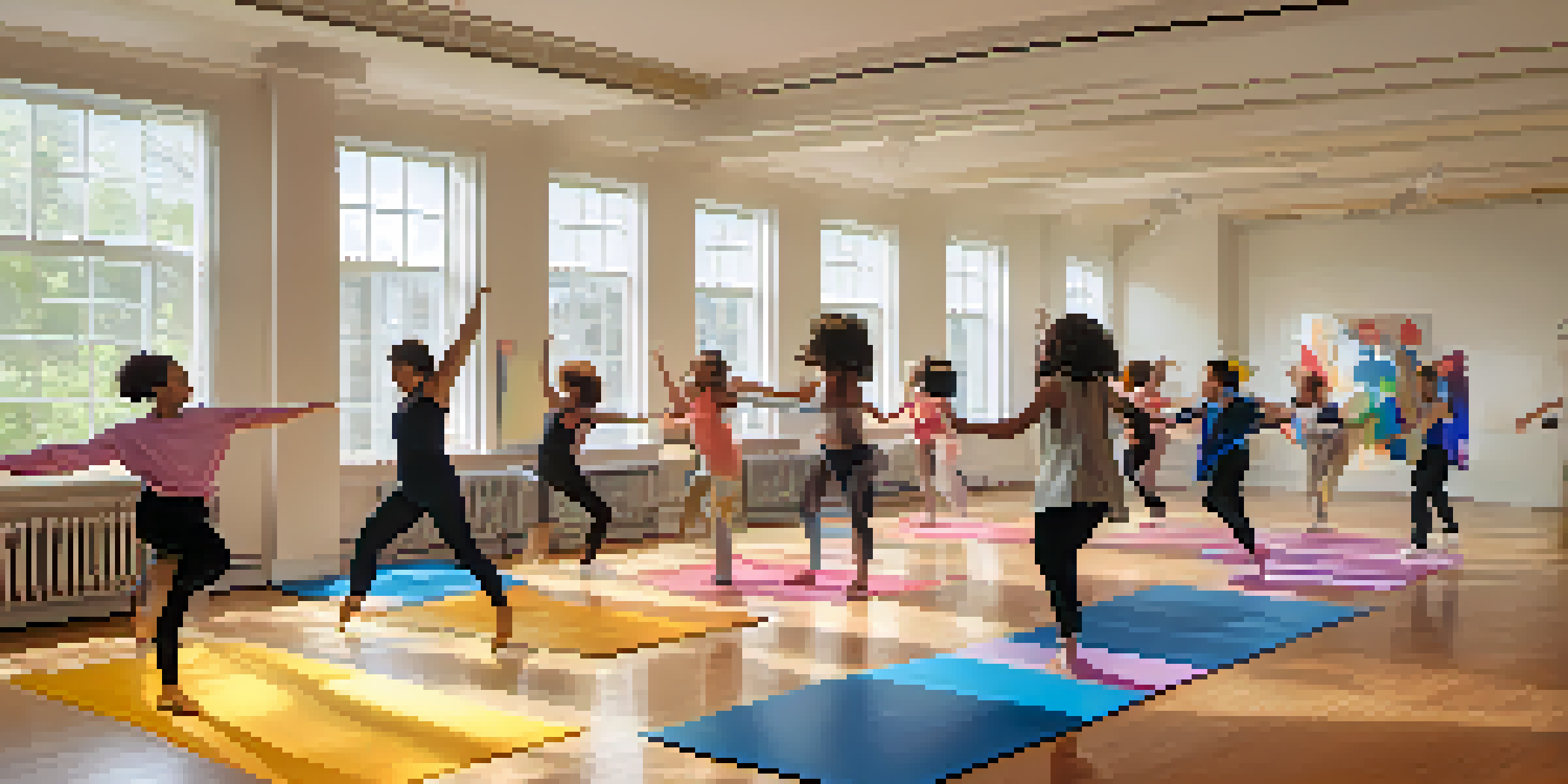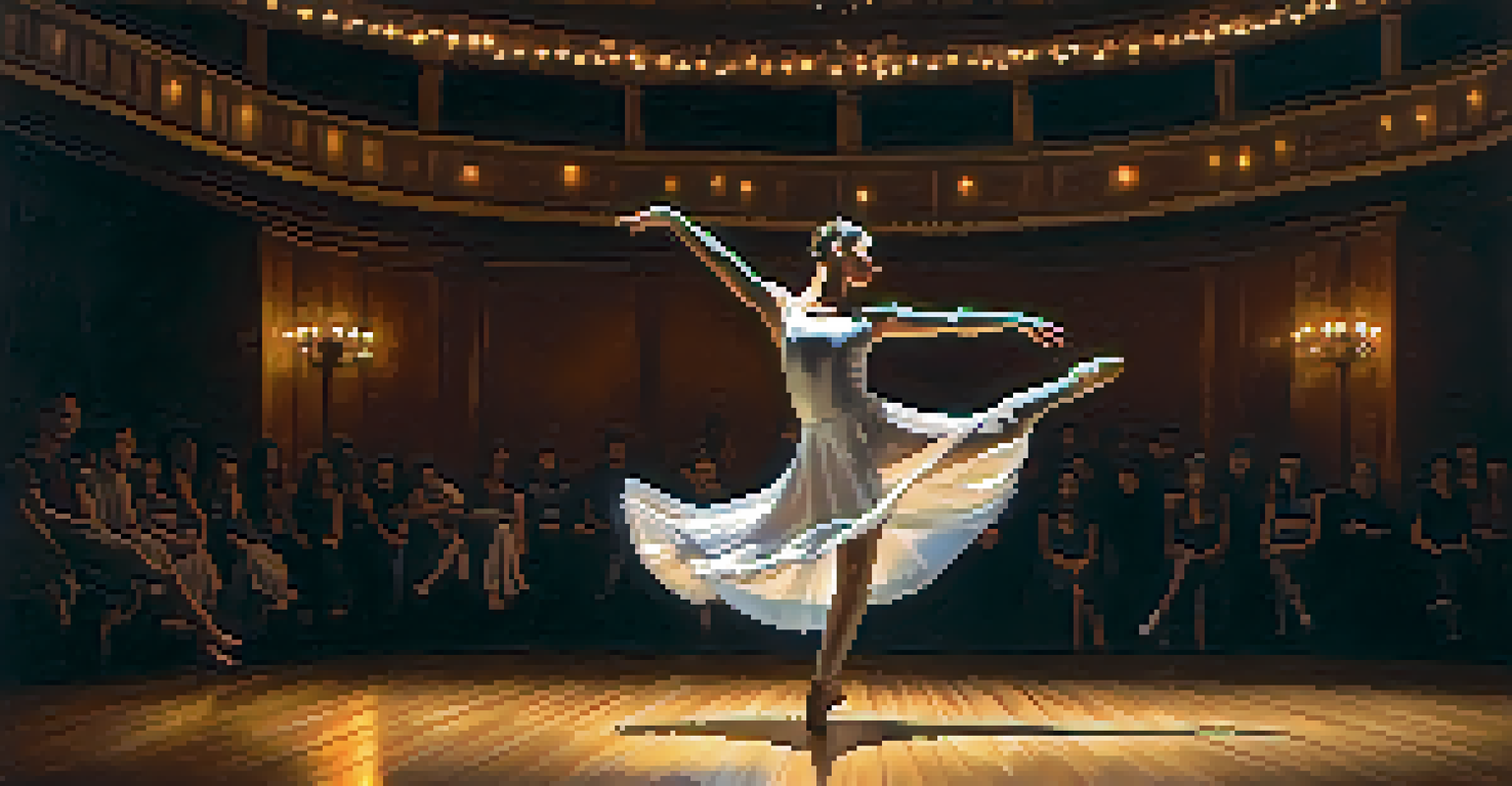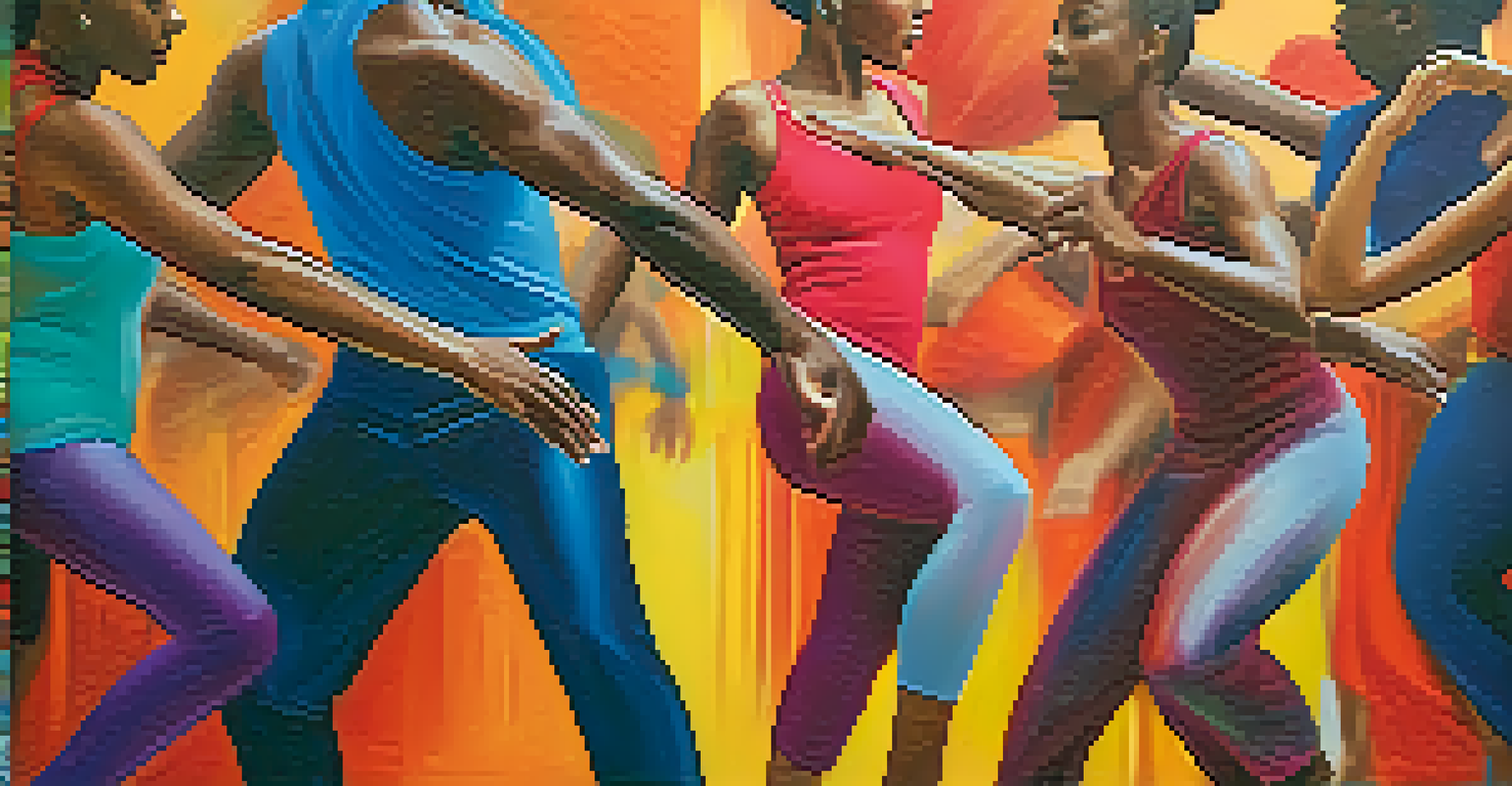The Power of Dance: A Gateway for Neurodiverse Individuals

Understanding Neurodiversity and Its Challenges
Neurodiversity refers to the variety of neurological differences, including autism, ADHD, and dyslexia. These conditions can affect how individuals process sensory information, communicate, and interact socially. People who are neurodiverse often face unique challenges in environments designed for neurotypical individuals, leading to feelings of isolation or frustration.
Dance is the hidden language of the soul.
The world can sometimes feel overwhelming for neurodiverse individuals, particularly in social situations. Traditional forms of communication may be challenging, making it harder to express thoughts or emotions. This struggle can lead to a sense of disconnection from others and from themselves.
However, understanding neurodiversity encourages a shift in perspective. Rather than viewing these differences as deficits, we can recognize them as variations of human experience that contribute to the rich tapestry of society. This mindset fosters acceptance and opens doors to new ways of connecting and communicating.
The Transformative Nature of Dance
Dance is a universal language that transcends barriers and connects people at a fundamental level. It allows individuals to express themselves without the constraints of words, making it particularly beneficial for those who find verbal communication challenging. Through movement, feelings and ideas can be conveyed in a way that is both powerful and liberating.

Engaging in dance can also encourage mindfulness, helping individuals to become more aware of their bodies and emotions. The rhythmic movement can create a calming effect, reducing anxiety and stress. This increased self-awareness often leads to greater confidence and self-acceptance.
Embracing Neurodiversity
Understanding neurodiversity as a valuable variation in human experience fosters acceptance and connection.
Moreover, dance can foster social connections in a unique way. Participating in group dance activities creates a sense of belonging, as individuals come together to share an experience. This communal aspect can help alleviate feelings of isolation and encourage friendships.
Dance as a Means of Self-Expression
For many neurodiverse individuals, dance serves as a powerful outlet for self-expression. It allows them to communicate their inner thoughts and feelings in a safe and creative environment. Whether through structured choreography or freeform movement, dance provides a platform for personal storytelling.
Neurodiversity is the idea that neurological differences like autism and ADHD are the result of normal variations in the human genome.
This form of expression can also be incredibly therapeutic. It enables individuals to explore their emotions, release pent-up energy, and cope with life’s challenges. Many find that dancing helps them process their experiences in a way that words sometimes cannot.
Additionally, the freedom of movement in dance encourages creativity and spontaneity. This can be particularly appealing to neurodiverse individuals, who often thrive in environments that allow for unconventional thinking and exploration.
Building Community Through Dance Classes
Dance classes tailored for neurodiverse individuals can play a crucial role in building community. These classes create a welcoming space where participants can learn and grow together, often guided by instructors who understand their unique needs. This supportive environment fosters trust and encourages participants to step outside their comfort zones.
In these classes, neurodiverse individuals can find a sense of belonging and camaraderie. They meet others who share similar experiences, forming connections that often extend beyond the classroom. This sense of community can be incredibly empowering, helping participants to feel valued and understood.
Dance as Self-Expression
Dance provides a powerful outlet for neurodiverse individuals to express their emotions and experiences creatively.
Moreover, dance classes can serve as a platform for learning new skills. As participants develop their dancing abilities, they also cultivate essential life skills like teamwork, communication, and resilience. These skills can have a lasting impact, benefiting individuals in various areas of their lives.
The Role of Dance in Emotional Regulation
Dance can play a significant role in helping neurodiverse individuals regulate their emotions. The physical activity involved in dance releases endorphins, which can improve mood and reduce feelings of anxiety or depression. This biological response can be particularly beneficial for those who struggle with emotional dysregulation.
Through dance, individuals can learn to identify and express their emotions in a constructive manner. The act of moving to music can provide a safe outlet for frustration or sadness, allowing individuals to process their feelings without resorting to negative coping mechanisms.
Furthermore, dance can help develop emotional intelligence. As individuals engage with various rhythms and styles, they learn to connect their emotions with movement, creating a deeper understanding of their feelings. This awareness can lead to healthier emotional responses in everyday situations.
Dance as a Tool for Sensory Integration
For many neurodiverse individuals, sensory integration can be a challenge. Dance offers a dynamic way to engage with different sensory inputs, such as sound, movement, and touch. This engagement can help individuals become more comfortable with various sensory experiences, leading to improved sensory processing.
Participating in dance allows individuals to explore their bodies and environments in a safe manner. As they move to music, they learn to navigate different sensations and rhythms, which can enhance their ability to adapt to new situations. This adaptability is crucial in daily life, as it can lead to increased confidence in unfamiliar environments.
Building Community Through Dance
Dance classes tailored for neurodiverse individuals create a supportive community that promotes belonging and skill development.
Additionally, dance can be tailored to accommodate individual sensory needs. By providing options for movement intensity, music volume, and lighting, dance programs can create inclusive spaces that honor each participant’s comfort level. This personalization fosters a sense of safety and encourages exploration.
The Future of Dance for Neurodiverse Individuals
As awareness of neurodiversity grows, the opportunities for dance to serve as a gateway for these individuals continue to expand. More dance programs are being designed specifically for neurodiverse communities, focusing on inclusivity and accessibility. This shift is not just beneficial for participants; it enriches the dance community as a whole.
The future holds promise for innovative approaches to dance education and performance. Collaborations between neurodiverse dancers and professional choreographers can lead to unique and groundbreaking works that reflect diverse perspectives. This integration can challenge traditional narratives in the arts and inspire new forms of expression.

Ultimately, the positive impacts of dance on neurodiverse individuals extend beyond the dance floor. As they gain confidence, build connections, and develop skills, they contribute to a more inclusive society. Dance is not just an art form; it is a powerful tool for change and empowerment.